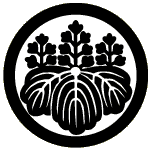“Don’t just say you have read books. Show
that through them you have learned to think better, to be a more
discriminating and reflective person. Books are the training weights of
the mind. They are very helpful, but it would be a bad mistake to
suppose that one has made progress simply by having internalized their
contents.”
- Epictetus, The Art of Living
- Epictetus, The Art of Living
Stoicism and the Art of Happiness.
By Donald Robertson. New York, McGraw Hill, 2013, 2015. Index,
bibliography, notes, 245 pages. Series: Teach Yourself: Philosophy and
Religion. ISBN: 139781444187106. VSCL.
Meditations. By Marcus Aurelius. Translated by Martin Hammond. Illustrated by
Coralie Bickford-Smith. Introduction by Diskin Clay. Hardcover
Classics. New York, Penguin Classics, Reissue Edition, 2015. 416
pages. ISBN: 978-0141395869. VSCL.
By Marcus Aurelius. Translated by Martin Hammond. Illustrated by
Coralie Bickford-Smith. Introduction by Diskin Clay. Hardcover
Classics. New York, Penguin Classics, Reissue Edition, 2015. 416
pages. ISBN: 978-0141395869. VSCL.
Stoicism Today: Selected Writings. By Patrick Ussher. CreateSpace Independent Publishing Platform, 2014. 202 pages. Volume 1. ISBN: 978-1502401922. VSCL.
From Dawn to Decadence: 500 Years of Western Cultural Life 1500 to the Present .
By Professor Jacques Barzun. New York, Harper Perennial, 2001. 912 pages. ISBN: 978-0060928834.
VSCL.
.
By Professor Jacques Barzun. New York, Harper Perennial, 2001. 912 pages. ISBN: 978-0060928834.
VSCL.
Philosophy as a Way of Life: Spiritual Exercises from Socrates to Foucault
I am going to participate in the Stoic Week online workshop from November 2nd to November 8th, 2015. You can sign up for the free workshop starting on October 26th. The theme of the Stoic Week workshop for 2015 is: Modern-Day Meditations on Marcus Aurelius.
How to Live a Good Life
Notebooks of an Old Philosopher
Virtues


















